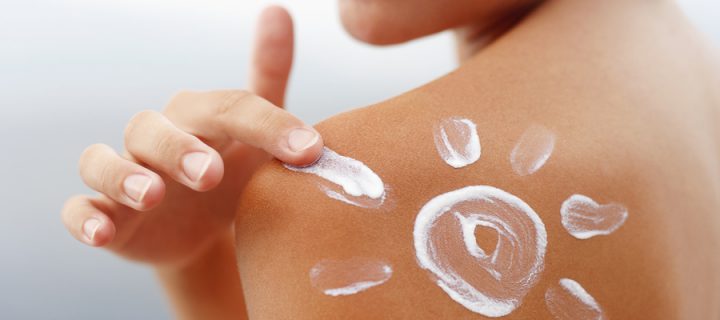Wearing a very high SPF sunscreen could give you false confidence on the beach.
The sun is shining. The weather is warming up. What does this mean? It’s time to slather on that skin protection. But this is easier said than done. Sunscreen, first brought to the modern market in the 1930s, comes in such a wide array of types, brands, and levels of defence these days that it can be difficult to know what to buy. Some people like to keep their sun protection as low as they can. This might be done in an effort to add a little color to your complexion. Others slather on the highest number they can grab in an effort to reach militaristic levels of guard. Here are some of the skin care truths you might want to take into consideration when buying your next sunscreen.
Your Whole Face Is At Risk
Gwenyth Paltrow hit the headlines this past March with a video demonstrating her sunscreen routine. It showed the owner of Goop- a self-described ‘modern lifestyle brand’- applying her sunscreen sparingly on her nose and cheekbones. Paltrow then commented that she goes on to dilute her sunscreen with moisturizer. The video became an overnight controversy. Since Paltrow has about 7.5 million Instagram followers, it’s not hard to see why people jumped on the demonstration.
Related: Should You Be Chlorinating Your Kiddie Pool?
According to Barry D. Goldman, M.D, talking with USA Today about the whole debacle, your whole face is actually a target for skin cancer. Not just your cheekbones and nose. Goldman, who is a clinical instructor at Cornell NewYork-Presbyterian Hospital, says that a whopping 80 to 90% of all skin cancers appear on the face and neck with many tumors happening around the eyes and on the forehead. So, no skimping allowed. If you are going to protect yourself from too much sun, you should apply sunscreen to your entire face, not just parts of it. And it should not be diluted. Slop it on.
It’s Likely Better to Avoid Super-High SPFs
So, let’s get back to the issue in the title of this article. Most of you, like me, may think that the higher your SPF sun protection, the more time you can spend safely in the sun. This is true to some degree, but the numbers can be deceiving. If you are wearing sunscreen with an SPF 30, if applied correctly, you can spend up to 30 times longer in the sun than normal without being burned. But you may be surprised to learn that SPF 100 (if you can find it) doesn’t allow you to spend 100 times longer in the sun.
According to a post on BusinessInsider.com, sunscreen with an SPF of 30 already blocks about 97% of UVB radiation. Sunscreens with SPF 50 give you 98% protection from UVB rays, and SPF 100, 99%. The fear, according to experts, is that consumers can be misled by these SPF numbers. If you are about to slather on SPF 100 sunscreen, you might feel like you can stay out in the sun longer than you can with SPF 50. But really, they offer similar amounts of protection. So, you actually risk getting burned wearing seemingly higher protection, in a strange twist of fate. It’s all about sunscreen psychology. The FDA, for all intents and purposes, labeled sunscreen values higher than 50 as misleading, back in 2011. Yes, now you know, so go tell your neighbor.
What Should You Wear?
If, like some people, you are afraid of the chemicals potentially present in mainstream sunscreens, stay in the shade. Invest in a wide-brimmed hat and wear it. Stay out of the sun when it is out, and wear sunproof clothing.
For those ready to go to the beach or the park in the glorious midday sun, you may follow the clothing suggestions above. They are always a good idea. In addition, you should grab a sunscreen with an SPF of at least 30. This is what the Mayo Clinic recommends but of course, individual circumstances may vary. If you go swimming, re-apply your sunscreen every 40 minutes. Be generous in your application and don’t forget your lips (find a sun protective lip balm).
For more detailed sunscreen tips with all the info you need, click here.
photo credits: verona studio/Shutterstock.com












